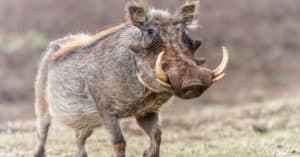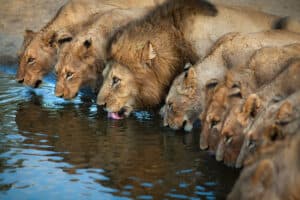Gophers are often confused with prairie dogs, though they are two separate animals entirely. Gophers are much smaller and have long claws and teeth for digging and biting through roots. They are called pocket gophers (Geomyidae). These animals can be quite a nuisance to people with infestations of them. They can even destroy a tree’s root system along with gardens. How big do these pesky pocket gophers get compared to other rodents?
A Bit About Pocket Gophers
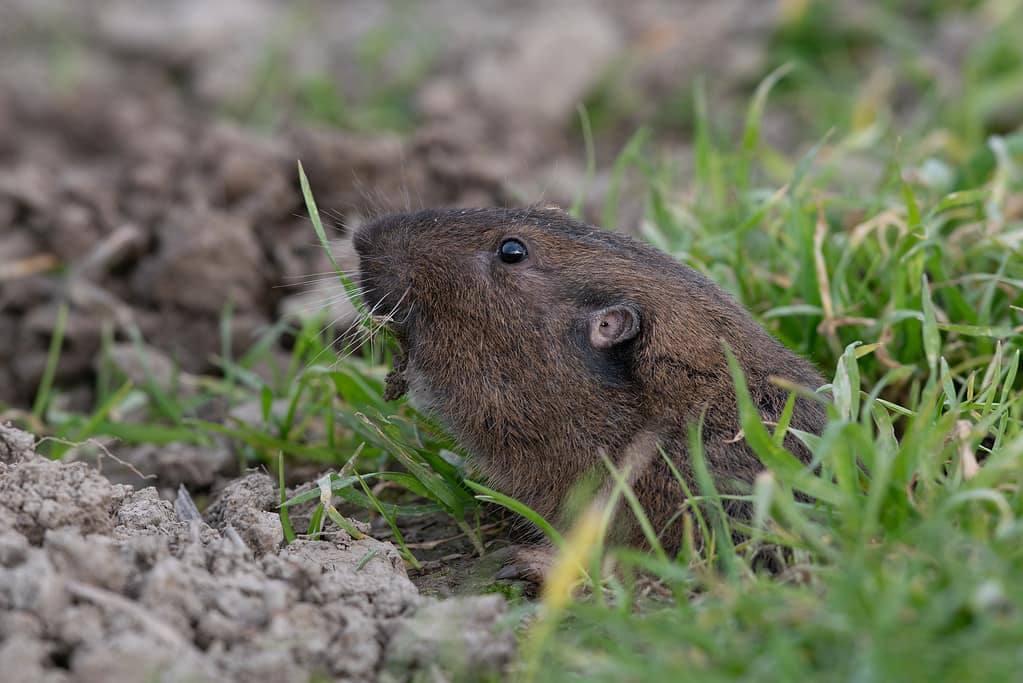
Pocket gophers look similar to guinea pigs, with small ears and hairless tails.
©zhuclear/iStock via Getty Images
Pocket gophers are found in the central to the western areas of the U.S., somewhat in Canada and Central America. Overall, there are 41 species of pocket gopher, though they are all very similar in size and appearance. They are 8 – 12 inches long, including their tails. Ranging from species to species, the gophers can be almost white, yellow, brown, or black. The gophers have small eyes and ears with highly sensitive noses and tails. Their front claws are used for digging and look a bit intimidating. Like all rodents, they had large yellowish-colored teeth that continued to grow throughout their lives. Pocket gophers live three years, which is typical of most rodents.
Pocket Gopher Size Comparisons
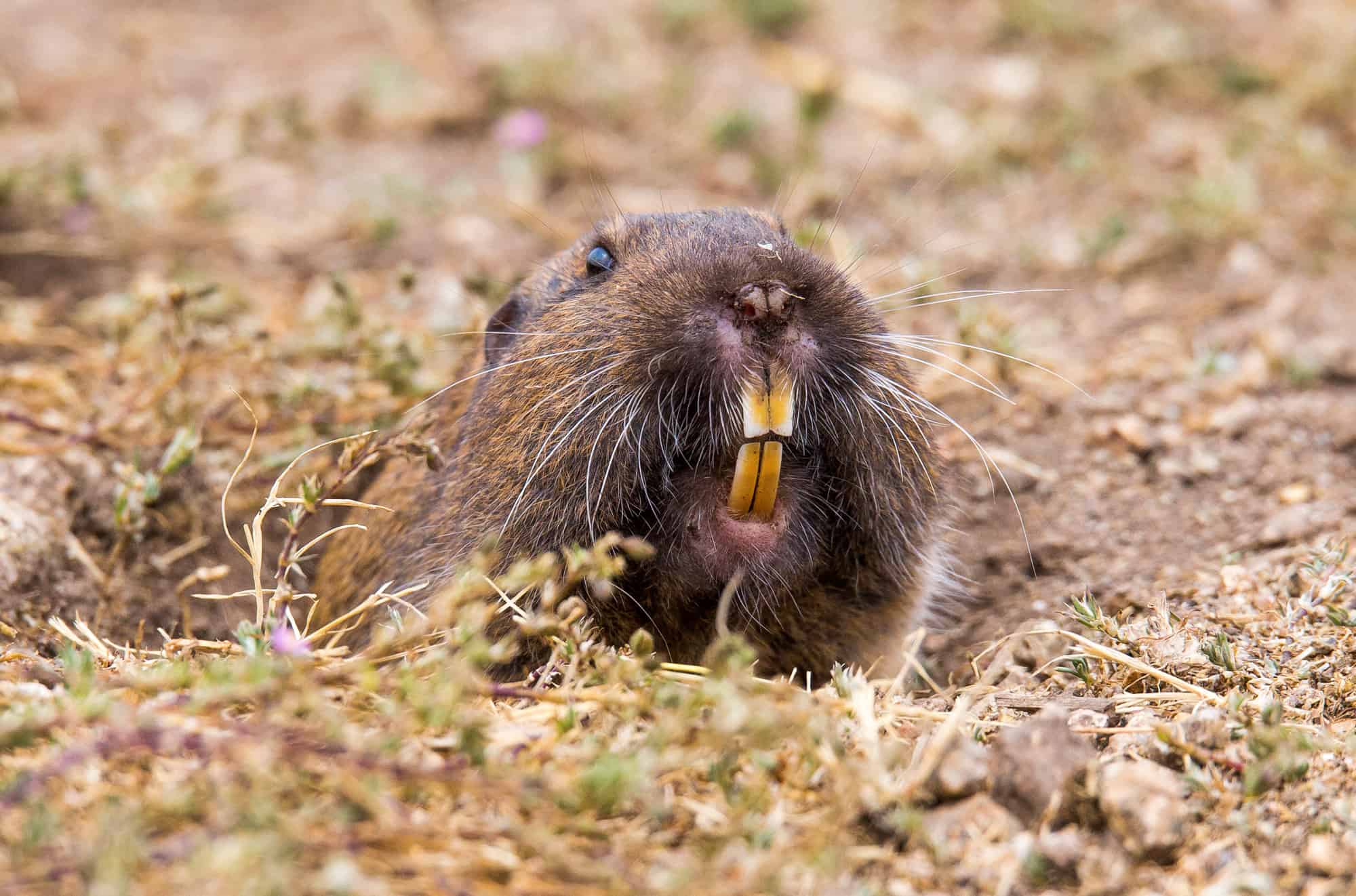
Unlike humans, healthy rodents have teeth ranging from yellow to orange.
©iStock.com/stevelenzphoto
Generally, pocket gophers are 7 -16 inches, including their tails. The males are larger than the females. Gophers weigh up to one pound. Let’s see how that adds up against some of the other rodents.
| Rodent | Body Length | Weight |
| Pocket Gopher | 5 – 14 inches | 1 pound |
| Grey Squirrel | 9 – 11 inches | 1.3 pounds |
| Deer Mouse | 3 – 6 inches | .34 – 0.84 ounces |
| Prairie Dog | 12 – 16 inches | 1 – 3 pounds |
| Syrian Hamster | 6 – 8 inches | 4 – 5 ounces |
| Chipmunk | 6 – 8 inches | 2 – 5 ounces |
| Groundhog | 16 – 32 inches | 4 – 14 pounds |
| Yellow-Bellied Marmot | 18 – 27 inches | 4 – 11 pounds |
| Muskrat | 10 – 14 inches | 1.3 – 4.4 pounds |
| Meadow Vole | 5.5 – 7 inches | 1.5 ounces |
Fun Facts About Pocket Gophers
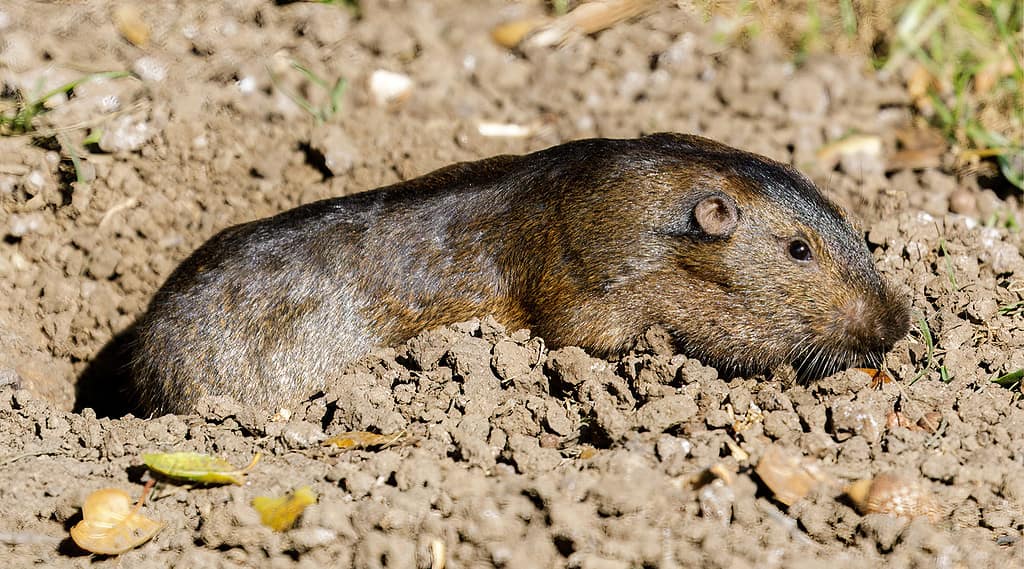
Pocket gophers help to keep soil from eroding, create water runoffs, and keep areas from flooding.
©iStock.com/dit:yhelfman
These strange little beasts have numerous tricks up their sleeves. One neat function of pocket gophers is their furlined cheek pouches to store snacks in. They have pockets, hence the name pocket gophers. This is similar to what hamsters do, except the pocket isn’t truly their cheek because it has fur inside and outside. They can also turn these little pockets inside out and deposit their findings in their burrow once they’re finished foraging. Pretty neat, right?
Another neat trick pocket gophers can do is close their mouths behind their teeth. This is so the oversized front teeth can dig through roots and soil without the little guys getting a mouthful of dirt. Indeed, any dental professionals reading this will be thinking of orthodontic opportunities for these rodents.
Pocket gophers come equipped with a highly sensitive tail in which they can arch over their bodies while in their tunnels and run backward as fast as they can. The tail is a sensory tool that helps guide them while they run backward.
Gophers Are Beneficial
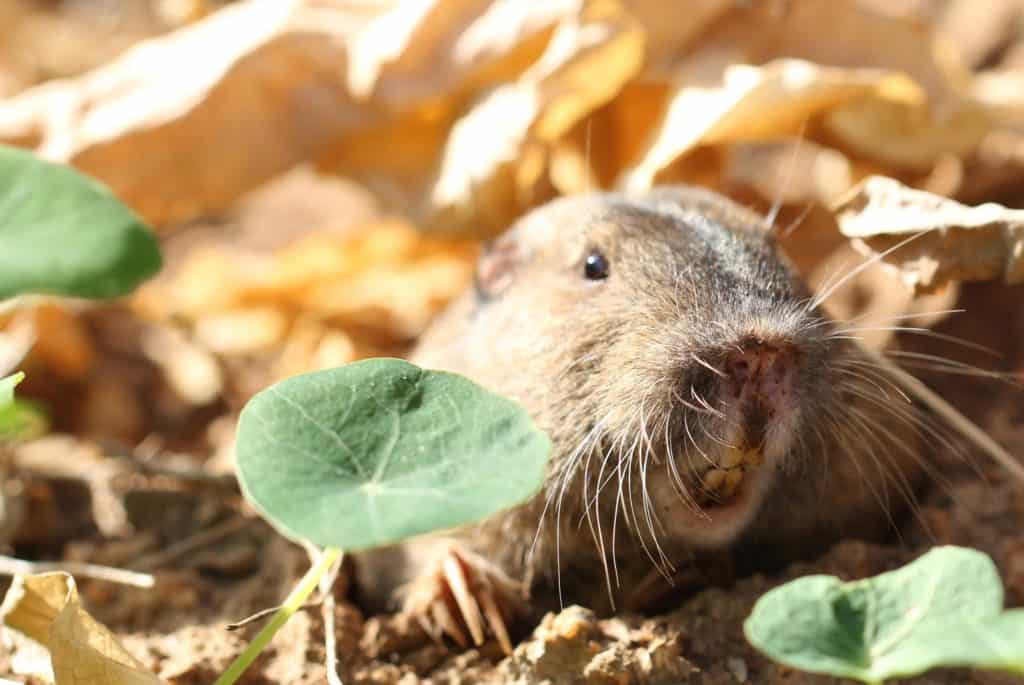
Gophers leave piles of dirt above the ground from the tunnels they dig.
©siamesepuppy / flickr – License
It might seem like pocket gophers are nuisances that leave piles of dirt everywhere, make holes all over the place, and kill plants, but they are highly beneficial to the ecosystem. It might not look like it, but these little rodents are excellently helping plants and trees grow!
Pocket Gopher Lawn Care Service
They act as real-life rototillers by digging their large tunnel systems and excavating the dirt from the tunnels to the surface. Rototillers and gophers take new earth to the top and mix it all together. This benefits plants and trees that grow there, allowing rain to soak in better and aerating the soil. This also helps kill and remove the dying vegetation from the scene, allowing new growth to begin.
When the pocket gophers are down there, they excrete nutrients from other plants eaten back into the soil, thus simultaneously performing natural fertilization. If you have lived on a farm, you know how important this is to the quality of plants planted there. If you have ever paid to have this done to a small yard, you will also know the typical service cost. It is expensive!
Pocket Gopher Erosion Specialists
Gophers also provide essential services to the environment. They help prevent erosion by creating space underground for water from rain or melting snow. They also produce far better absorption of water in areas they have “aerated.” While pocket gophers may seem like pests to uneducated people, they are doing a great job. Help educate those not knowing why they should leave the little pests alone to work.
The photo featured at the top of this post is © iStock.com/stevelenzphoto
Thank you for reading! Have some feedback for us? Contact the AZ Animals editorial team.




